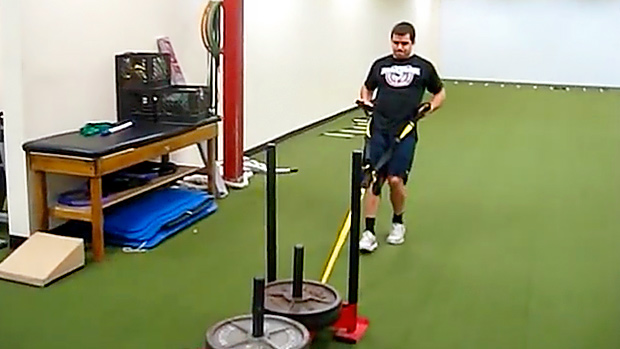Side Bends Kinda Suck
It's often said that there's no such thing as a bad exercise, only misplaced application or poor execution. I disagree. The dumbbell side bend makes the naughty list for a few reasons:
First, people often do them with dumbbells in both hands, which doesn't make any biomechanical sense considering that the weight on the non-working side essentially offsets the weight on the working side. This means neither side is actually working.
Even then, doing them the "right" way – with one dumbbell – is still pointless from a leverage standpoint. Since you're holding the dumbbell close to your body and giving yourself a huge mechanical advantage over the weight, any semblance of actual resistance is virtually nonexistent.

Second, even if physics didn't apply, dumbbell side bends would still be suboptimal for targeting the obliques, which is supposed to be the whole point of the exercise. Sure, they might make a slight difference, but there are significantly better ways to train your obliques without working through hundreds of reps of monotonous side-bending.
One of the best ways to hypertrophy a muscle (or muscle group) is to isolate it while it's executing its true function. Think about how the obliques actually function. Whether you're doing an athletic movement or carrying grocery bags in from the car, the primary job of the obliques is to create a strong brace to resist excess movement at the trunk, not create it.
That's why they don't respond all that well to dynamic exercises like side bends. Instead, they're targeted most effectively through the act of resisting lateral flexion while maintaining a braced isometric position.
Still, the obliques need load and quantifiable measurements of progression to grow. That's why a well-rounded approach to training them requires taking both load and functional anatomy into account.
▶️ The Barbell Suitcase Carry
The barbell suitcase carry is a far better alternative to side bends because it imposes actual "usable" resistance, and it trains the obliques in the same way they function – by resisting excess movement at the trunk.
Since training a muscle in accordance with its primary anatomical function is more effective for hypertrophy, this makes the barbell suitcase carry a surefire exercise to build your obliques – and the rest of your midsection – while also hammering your traps, shoulders, forearms, and upper back.
Plus, a stronger and more stable core is conducive to strength in the big lifts, which is never a bad thing.
Using a barbell instead of a dumbbell ups the ante in three ways:
- You can use heavier loads without having to worry about a massive kettlebell or dumbbell banging into your hip.
- Due to the length of the bar, the barbell suitcase carry hammers the forearms especially hard. Any breakdown in your grip, whether it's your wrist position or a couple of fingers loosening up, will inevitably cause the bar to tip forward or backward.
- The full-body stabilization demands are amplified since there's a stronger need for tri-planar stability because of the "free-roaming" nature of the bar. As a result, the entire body is forced to create dynamic tension from head to toe.
Regardless of the loading tool, both suitcase carry variations blow dumbbell side bends out of the water in terms of building your obliques, which makes them a superior alternative.





